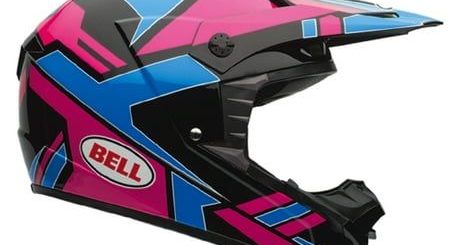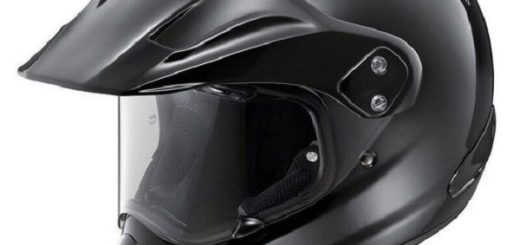A Look Inside Motorcycle Helmets Construction
Your motorcycle helmets is your essential safety gear, shielding your head from impact in a crash. But what exactly goes into the construction of a motorcycle helmet? Understanding the materials and components used will not only satisfy your curiosity but also help you appreciate the level of engineering that goes into keeping you safe on the road.
The Key Players: Shell, Liner, and Comfort Padding
A motorcycle helmet can be broken down into three main components:

- Outer Shell: The first line of defense, the outer shell is responsible for absorbing and deflecting impact during an accident.
- Inner Liner: This layer absorbs the remaining energy from an impact, helping to cradle and protect your head.
- Comfort Padding: The inner padding provides a snug, comfortable fit and helps wick away moisture.
Let’s delve deeper into the materials used for each of these crucial components.
Outer Shell: Strength and Protection on the Outside
The outer shell of a motorcycle helmet is typically constructed from one or a combination of the following materials:
- Polycarbonate: A popular choice due to its affordability and lightweight properties. Polycarbonate shells are strong and offer good impact resistance, but they can become brittle over time, especially with prolonged sun exposure.
- Thermoplastic Resin (ABS): Offering a balance between affordability, strength, and scratch resistance, thermoplastic resin is a common shell material. It’s generally more durable than polycarbonate but slightly heavier.

- Fiberglass: A step up in terms of strength and durability, fiberglass shells are known for their ability to absorb impact energy progressively. They are lighter than some thermoplastic resin shells but come at a higher cost.
- Composite Shells: The pinnacle of helmet shell technology, composite shells combine various materials like fiberglass, Kevlar, and carbon fiber. These shells offer superior strength, reduced weight, and excellent impact absorption properties. However, they are the most expensive option.
Inner Liner: Absorbing Impact and Protecting Your Head
The inner liner of a motorcycle helmet is typically made from Expanded Polystyrene (EPS), also known as styrofoam. EPS is a lightweight, closed-cell foam that crushes upon impact, absorbing the energy and protecting your head.
Some higher-end helmets might incorporate additional materials like Ethylene-Propylene Diene Monomer (EPDM) foam alongside EPS for enhanced impact absorption properties.
Comfort Padding: Keeping You Secure and Comfortable
The inner comfort padding of a motorcycle helmet is usually made from a combination of materials like:
- Nylon or Polyester Mesh: These breathable materials wick away sweat and moisture, keeping your head cool and comfortable during rides.
- Antibacterial Fabrics: Some helmets incorporate antibacterial fabrics to help prevent the growth of odor-causing bacteria.
- Removable and Washable Padding: Most helmets have removable and washable inner padding for easy cleaning and maintenance.
Additional Features for Enhanced Safety and Comfort
Modern motorcycle helmets often include additional features to improve safety and comfort:

- Visors: Visors come in various materials like polycarbonate or scratch-resistant, anti-fog treated options. They offer protection from wind, rain, dust, and UV rays.
- Ventilation Systems: A well-designed ventilation system allows for optimal airflow, keeping your head cool and comfortable during hot weather riding.
- Chin Straps: A secure chin strap is crucial for keeping the helmet in place during a crash. Look for D-ring closures, considered the most secure option.
- Sun Visors: Internal sun visors offer an additional layer of protection from the sun’s glare without compromising visibility.
Choosing the Right Motorcycle Helmets Material: Striking the Balance
The ideal helmet material depends on your budget, riding style, and desired level of protection. Here’s a quick breakdown to help you decide:
- For Budget-Minded Riders: Polycarbonate or thermoplastic resin shells offer a good balance of affordability and protection.
- For Everyday Riders: Fiberglass shells provide a good compromise between weight, durability, and impact absorption.
- For Performance-Oriented Riders: Composite shells offer the best combination of strength, weight, and safety but come at a premium price.
Remember, regardless of the material, ensure your helmet is DOT-approved, signifying it meets the minimum safety standards set by the U.S. Department of Transportation.
Beyond Materials: Exploring Motorcycle Helmets Design and Safety Features
While understanding the materials used in motorcycle helmet construction is crucial, it’s just one piece of the puzzle. Helmet design and safety features also play a significant role in overall protection. Let’s delve deeper into these aspects:

The Engineering Behind a Safe Motorcycle Helmets
Motorcycle helmet design goes beyond simply slapping a shell and liner together. Here are some key design elements that contribute to a helmet’s effectiveness:
- Shell Shape: The helmet’s aerodynamic design helps reduce wind drag and noise while ensuring a smooth deflection of impact forces in a crash.
- Shell Thickness: The thickness of the outer shell varies depending on the material and helmet design. Thicker shells generally offer more protection but can also add weight.
- Visor Attachment System: A secure visor attachment system is critical. Look for visors that offer a tight seal and minimize the risk of detaching during a crash.
- Emergency Release System: Some helmets incorporate an emergency release system that allows first responders to easily remove the helmet in case of an accident.
Safety Features to Enhance Your Ride
Modern motorcycle helmets come equipped with a variety of safety features to further enhance rider protection:
- Double D-Ring Chin Strap: Widely considered the most secure option, double D-ring chin straps offer a reliable and easy-to-use closure system.
- Padding Placement: The strategic placement of padding throughout the helmet’s interior is crucial for optimal impact absorption and a comfortable fit.
- Multiple Impact Protection: Some high-end helmets are designed to absorb multiple impacts throughout the helmet’s lifespan, offering continued protection even after a minor accident.
- Reflective Materials: Reflective elements on the helmet can improve your visibility to other motorists, especially during low-light conditions.
Certifications and Standards: Ensuring Your Motorcycle Helmets Meets the Requirements
When purchasing a motorcycle helmet, prioritize safety by ensuring it meets the following standards:

- DOT (Department of Transportation): The DOT standard is the minimum safety requirement for motorcycle helmets sold in the United States. Look for the DOT sticker on the back of the helmet.
- ECE (Economic Commission for Europe): The ECE standard is another widely recognized safety standard for motorcycle helmets, often considered more stringent than DOT. Some European-made helmets might only have ECE certification.
- Snell Memorial Foundation: The Snell Memorial Foundation conducts its own rigorous helmet testing and certification program. Snell-certified helmets are known for exceeding DOT and ECE standards but may be more expensive.


